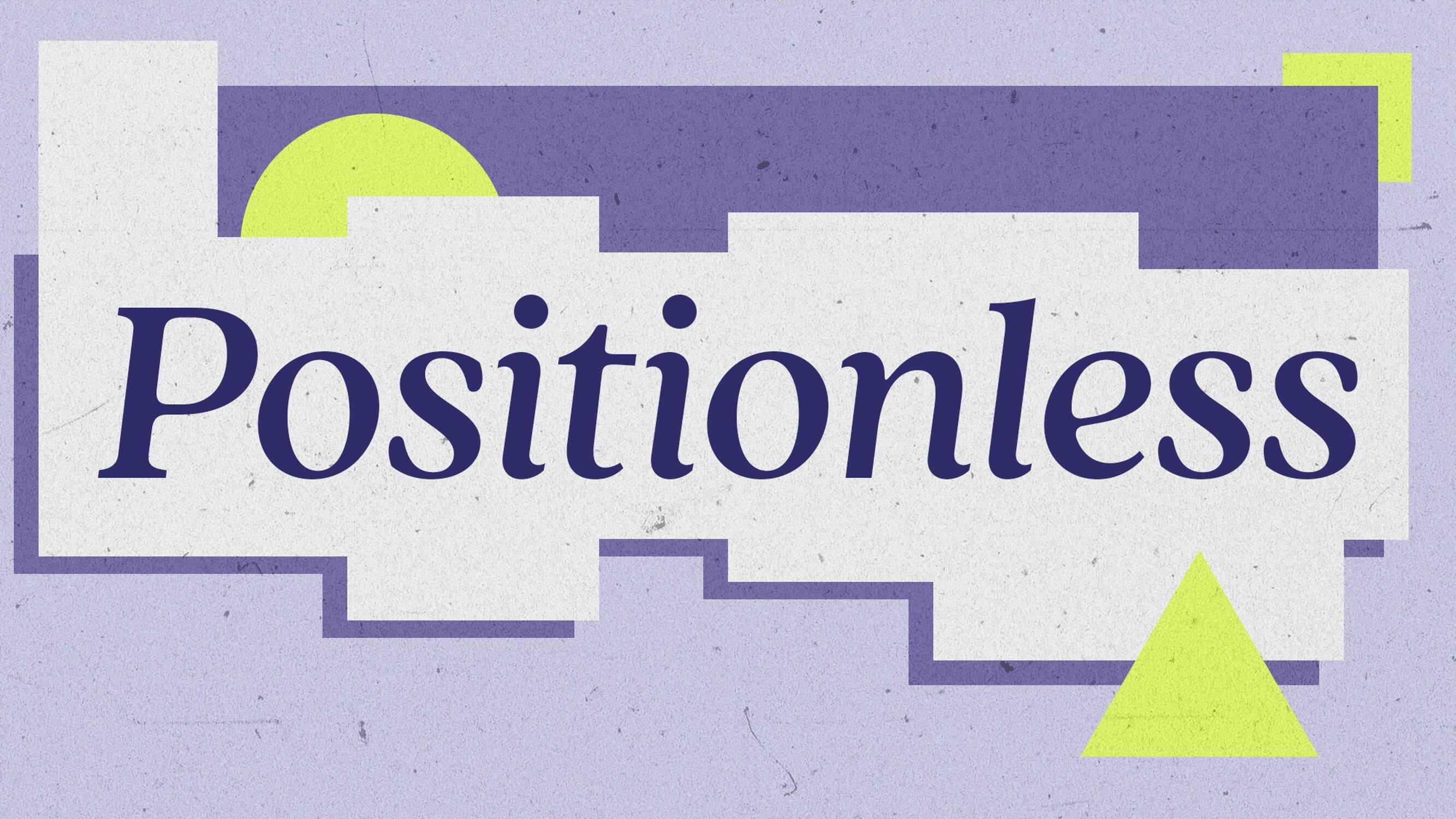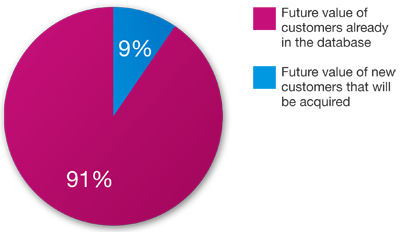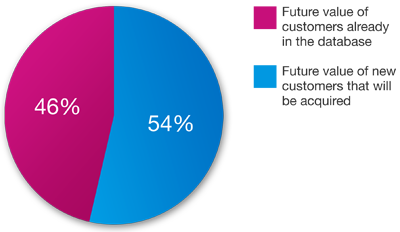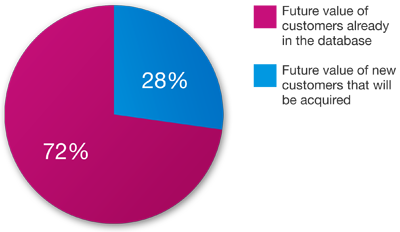
AI and the Retail Marketer’s Future
How AI transforms strategy and processes, driving the adoption of Positionless Marketing
Exclusive Forrester Report on AI in Marketing

Will most of your future revenues come from existing customers or from new ones? This simple question is one that marketing analysts should consider carefully, because it can provide a unique perspective on the overall health of your business – and it can provide important input to long-term strategic planning. We asked ourselves this question regarding the many companies who rely on our software and expertise to plan and execute their customer marketing and retention efforts. What we found eventually led us to the conclusion that every business can gain important new insight into its strategic planning by investigating the expected source of its future revenues.
In order to discover where your future revenues will come from, you first need to examine the total forecasted future value of your entire existing customer database. Next, generate a future value forecast of all the new customers you expect to acquire over the next year, based on your new customer acquisition performance of the past few months. Typically, you’ll want to do both of these future value calculations looking one year into the future. (This is because, over time, the group of new customers will naturally grow while today’s group of existing customers will diminish due to natural churn rates, thus slanting the balance away from an accurate comparison.) Comparing these two numbers can provide some deep insight into the current health of your business. Let’s look at three real-life examples:
The future value forecasts for a particular casino site indicated that 91% of future revenues would come from its existing customer base, with only 9% to come from newly acquired customers.

This ratio may indicate that the company is not successful enough at acquiring new customers. Its over-dependence on its existing customer base exposes it to two dangers: (1) the natural churn of existing customers (as in any business) will represent a decline in revenues over the long term, and (2) an unforeseen market event (such as the sudden marketing push of a strong competitor) could quickly reduce the size of the existing customer base – and result in a corresponding reduction in revenues. Our recommendation to this company was to invest more resources in customer acquisition in order to increase revenues and reduce risk by achieving a better balance.
We observed a ratio of nearly 50/50 in an online bingo site:

The fact that less than half of future revenues are expected to come from existing customers may be a red flag about the company’s success at customer retention efforts. The strategic implication is clear: consider investing more in customer retention. Fortunately for our client, this is something that our Optimove software excels at.
This forex site exhibited a future value balance of 72% from existing customers and 28% from newly acquired customers:

After observing dozens of different examples of this ratio in various online verticals, we asked ourselves: What is the ideal balance between future revenues coming from existing customers versus new ones? Is there, in fact, a sweet spot that companies should aim for? Clearly, there cannot be one single ratio that is best for every company. For example, it is natural for young companies without a large existing customer base to have a much larger portion of future revenues expected to come from new customers. Likewise, older companies tend to expect more of their revenues to come from their existing customer base. However, in our experience tracking this balance among those companies we consider the most adept at both acquisition and retention efforts, we’ve reached the tentative conclusion that a roughly 70/30 existing/new balance exhibits the most robust future revenue picture with the least risk. Note that we have not observed any particular patterns of consistent existing/new ratios within industry verticals. Rather, it appears that the ratio exhibited by a particular company is the result of the company’s own performance and policies.
Beyond looking at this type of analysis at only one point in time, valuable insights can be discovered by examining how the future value balance between existing and new customers changes over time. Firstly, this is one important way of measuring the progress of certain marketing initiatives. For example, if a company is making a renewed push at improving customer acquisition, an improving new-to-existing ratio can indicate the success of the effort. This is because beyond simply looking at how many new customers are acquired, this analysis provides a holistic view of the value of the new customers into the future. A second benefit of long-term comparisons is to note changing balance trends which should trigger an investigation. For example, if the future value percentage of new customers starts slipping, it might be an early warning indicator of a problem that you can fix. Maybe recent sources of new customers are delivering customers with lower levels of long-term value. Or, perhaps, it’s just that efforts at retaining customers are more successful than before, resulting in the shift. Whatever the reason, this is an important additional customer analytics tool to be able to detect any problems – and take action – as quickly as possible.
Of course, in order to take advantage of the ideas described above, you need an accurate and reliable method to calculate the future value of both new and existing customers. While describing how to do this is beyond the scope of this post, I invite you to take a look at our Optimove software, which delivers these metrics (and many more) automatically. Even more importantly, Optimove leverages our unique customer modeling technology to give you a powerful end-to-end system for driving one-to-one marketing campaigns designed to maximize lifetime customer value. Read more about it in our main site and then contact us for a free Web demo.
Exclusive Forrester Report on AI in Marketing
In this proprietary Forrester report, learn how global marketers use AI and Positionless Marketing to streamline workflows and increase relevance.


Varda is all about the customer. With more than 10 years helping customers improve their businesses by making the best use of their data, Varda is the perfect blend of energy and efficiency, equipped with a bright personality and exemplary professionalism. She holds a Bachelor’s degree in Economics and Business Administration.


